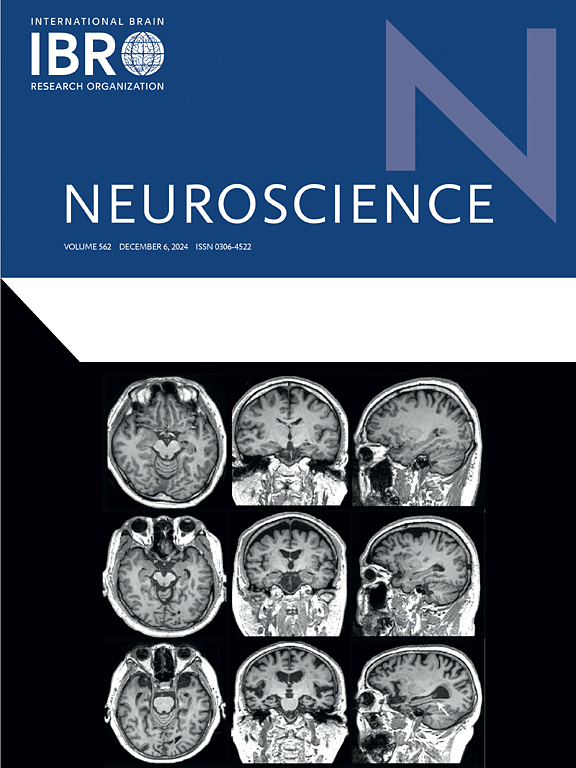高血压患者神经血管耦合与认知的纤维相关导管造影。
IF 2.8
3区 医学
Q2 NEUROSCIENCES
引用次数: 0
摘要
高血压是脑血管病(CSVD)的主要危险因素。然而,其机制联系尚未完全了解。扩散加权磁共振成像(dMRI)的进步提高了检测细微白质(WM)结构完整性变化的灵敏度。对44例无症状性CSVD的高血压患者进行多模式脑结构和功能评估,包括dMRI、神经心理测试和经颅多普勒监测右大脑中动脉(MCA)和左大脑后动脉(PCA),以评估神经血管耦合(NVC)。在主成分分析中,研究了模拟的NVC曲线。我们使用相关神经束造影检查了WM完整性与NVC和认知表现的横断面关系。采用了两种dMRI模型的扩散测量:扩散张量成像的分数各向异性、平均扩散率、轴向扩散率和径向扩散率,以及q空间微分同构重建的定量各向异性(QA)和各向同性。对于PCA的NVC,血管弹性特性和初始反应速度标记表明较好的功能性充血和较好的WM完整性。然而,振幅显示NVC增加,WM完整性变差。在MCA, NVC增加与WM完整性降低相关。更好的认知表现与保持脑区的完整性有关。尽管WM完整性较差,但功能性充血增加可能反映高血压患者NVC效率较低,这可能是由(异常)适应机制和应对CSVD的脑网络重组引起的。这项观察性研究强调了经颅多普勒和QA作为症状前CSVD易感性标志物的潜力。本文章由计算机程序翻译,如有差异,请以英文原文为准。
Fiber correlational tractography with neurovascular coupling and cognition in hypertension
Hypertension is the primary risk factor for cerebral small vessel disease (CSVD). However, its mechanistic links are yet to be completely understood. Advancements in diffusion-weighted magnetic resonance imaging (dMRI) increased sensitivity in detecting subtle white matter (WM) structural integrity changes.
44 hypertension patients without symptomatic CSVD underwent multi-modal evaluation of cerebral structure and function, including dMRI, neuropsychological tests and transcranial Doppler monitoring of the right middle cerebral artery (MCA) and left posterior cerebral artery (PCA) to assess neurovascular coupling (NVC). In the PCA, the modeled NVC curve was studied. We examined the cross-sectional relationship of WM integrity with NVC and cognitive performance, using correlational tractography. Diffusion measures from two dMRI models were used: fractional anisotropy, mean diffusivity, axial diffusivity, and radial diffusivity from diffusion tensor imaging, and quantitative anisotropy (QA) and isotropy from q-space diffeomorphic reconstruction.
Regarding the NVC in the PCA, vascular elastic properties and initial response speed markers indicated better functional hyperemia with better WM integrity. However, the amplitude suggested increased NVC with worse WM integrity. In the MCA, increased NVC was associated with lower WM integrity. Better cognitive performance associated with preserved WM integrity.
Increased functional hyperemia despite worse WM integrity may reflect less efficient NVC in hypertensive patients, potentially arising from (mal)adaptive mechanisms and brain network reorganization in response to CSVD. This observational study highlights the potential of transcranial Doppler and QA as susceptibility markers of pre-symptomatic CSVD.
求助全文
通过发布文献求助,成功后即可免费获取论文全文。
去求助
来源期刊

Neuroscience
医学-神经科学
CiteScore
6.20
自引率
0.00%
发文量
394
审稿时长
52 days
期刊介绍:
Neuroscience publishes papers describing the results of original research on any aspect of the scientific study of the nervous system. Any paper, however short, will be considered for publication provided that it reports significant, new and carefully confirmed findings with full experimental details.
 求助内容:
求助内容: 应助结果提醒方式:
应助结果提醒方式:


